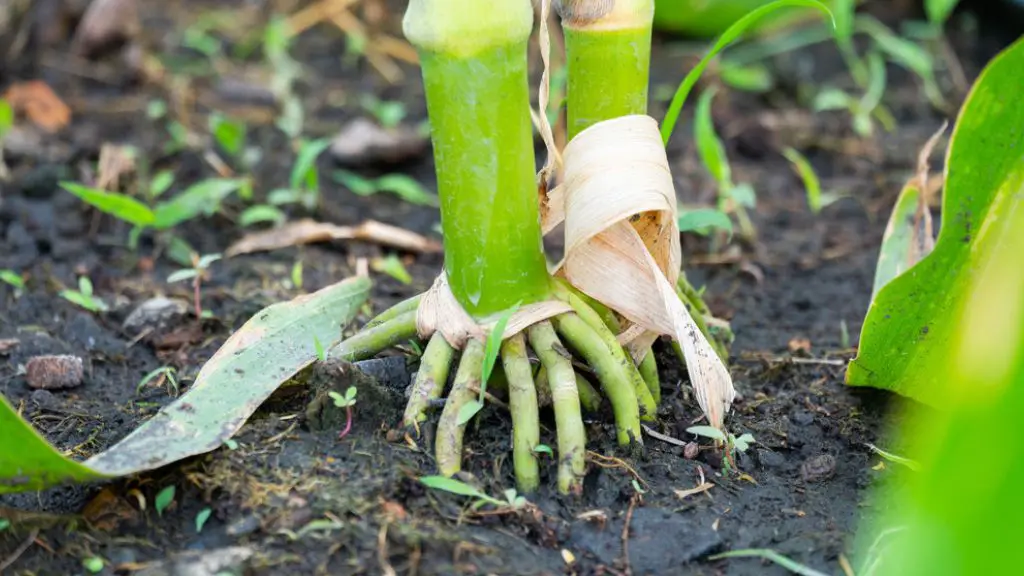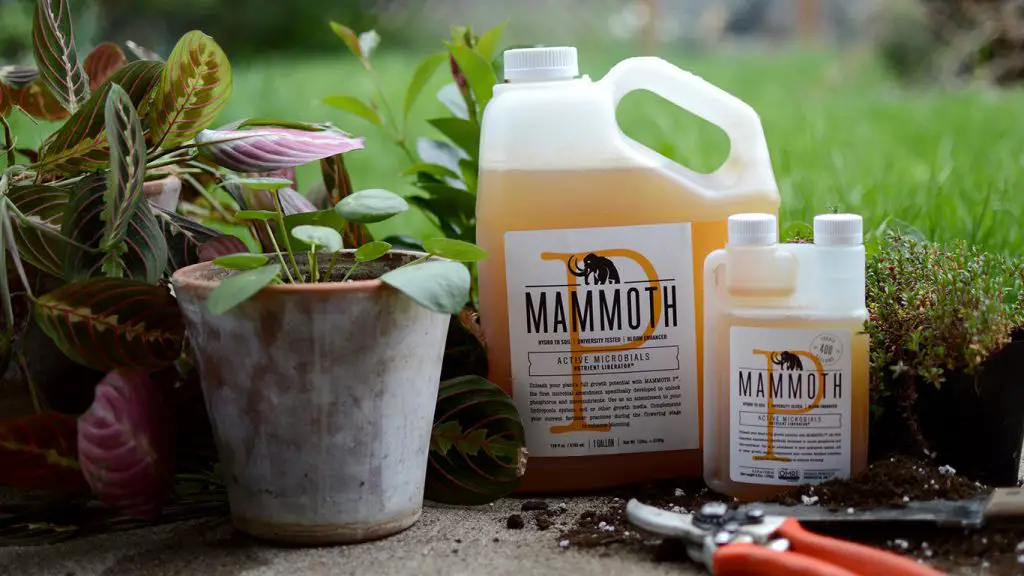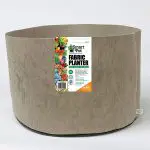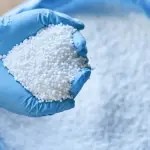Tribus vs Mammoth P: Which One Is Better?

Phosphorus is a critical component that is very important for healthy growth in plants, particularly in the blooming and growing phases. But sometimes, plants face a shortage of this nutrient. It’s bad because deficiency of phosphorus can cause the leaves of your plant to turn dark, dull, blue-green, and sometimes pale. Luckily, now we have microbial inoculants such as mammoth P and Tribus that makes phosphate available to plants again.
But people don’t know which one is better. In this article, I am going to compare Tribus vs Mammoth P and discuss which one you should buy.
So, stay till the end as your plant’s yield depends on the information I am about to describe.
Tribus vs Mammoth P– Which Is Better?
I think both of these products are pretty amazing if you want to achieve a green garden or just a high yield. But Mammoth P is better than Tribus.
I have noticed two differences between both products, one is in favor of mammoth P and one against it. But overall, Mammoth P is the best.
Tribus vs Mammoth P differences are:
- Versatility
- Price
Versatility
Mammoth P has more diverse uses in every media (including super soil) and for every plant. Tribus is not for super soils. However, both are extremely good for soil and hydroponic systems.
Price
Mammoth is also quite expensive but will be worth every single penny. This stops people from buying it. However, its high cost is justified because of its extra features such as it is safe for your environment and it contains beneficial bacteria for plants as well.

Although the price of Tribus is cheaper than mammoth P, it is still an excellent microbial inoculant but has somewhat fewer features than mammoth P. Moreover, you have to take more care of the dosage for Tribus to get the optimal results.
That is why I would recommend you should buy Mammoth P if you can afford it but again the choice is yours. If you don’t have enough money, then go for Tribus as it is a great product too.
Why Tribus Is Good?
Tribus is a fabulous microbial addition for growers aiming to boost phosphorus production. This scalable microbial additive can be utilized to:
- Boost nutrient intake
- Root development
- Enzyme synthesis
- Root-zone health.

Why Mammoth P Is Better Than Every Phosphorous Product?
Mammoth P is second to none when it comes to the list of the best microbial inoculants. In fact, it is one of the most famous microbial inoculants among gardeners because of its unique features, such as aiding in the uptake of phosphorus by your plants, resulting in a considerable improvement in your harvest outcomes.
Plus, this product supports every growing media.
Indeed, Mammoth P is a microbial inoculant that accomplishes exactly what it promises.
So, if you can afford it, buy it. If you can’t, then Tribus is the best choice for you.
Gardeners often ask, what stimulates root growth? It is phosphorus which is very important for proper plant growth and development. You can get this nutrient from both Tribus and Mammoth P.
People make another comparison with Mammoth P. It’s with Photosynthesis Plus.
Photosynthesis Plus vs. Mammoth P
MicrobeLife has created a hype claiming that if you use Photosynthesis Plus on your crop, it will increase the yield up to 9 pounds. According to an estimate, you can increase your yield by 80% with this product.
But is this Photosynthesis P. better than mammoth P? Probably not.
There is no doubt that photosynthesis plus is a one-of-a-kind product that improves the conversion of solar energy to accessible carbon to fuel plant needs and drive biology at the foliar and root zone levels. On contact, Photosynthesis Plus gets to work establishing necessary root and plant biology. But still, when I compare it with Mammoth P, it has fewer features compared to mammoth P. It only improves the access of sunlight to plants but does not provide beneficial soil bacteria or phosphorus to plants.
The shelf life of photosynthesis Plus is also less than mammoth P. That means photosynthesis plus expires earlier than mammoth P. The shelf life of phosphorus plus is about one year after opening. But the shelf life of mammoth P is two years once opened. Plus, plants require less dosage of mammoth than Photosynthesis Plus.
URB vs. Recharge
Recharge is the organic stimulant that works wonders in soil. It is loaded with Trichoderma, mycorrhizae, and other beneficial soil bacteria. Any fertilizer can be used with Recharge to keep more nourishment in the root zone. However, employing recharge has a number of drawbacks. Recharge fertilizer causes water contamination, chemical burn to crops, increased air pollution, soil acidity, and mineral loss, to name a few issues.
Talking about URB, it is a first-class, all-natural plant additive that will boost your plant’s immune system and enhance root mass, resulting in higher yields. Your plants will not be harmed by URB. URB will help you use less of the other products you’re already utilizing. Plants cultivated with the URB microbial product have proven resistance to disease control measures. So, it is pretty obvious that URB is better than recharge.
Myco Jordan vs Recharge
Myco Jordan is an absorbable powder that contains live mycorrhizal fungus spores and may be used as a soil inoculant. Mycorrhizae from Myco Jordan form a symbiotic relationship with the roots of your plant, greatly boosting water and nutrient intake and absorption. It increases plant vigor, root growth, crop quality, and yields.
Recharge is a natural growth stimulant that is driven by a patented living soil microbial package. It’s designed to be used as a soil additive in horticultural systems to help beneficial bacteria colonize. Recharge is a Bio-Fertilizer that may be used in both organic and chemical farming to boost plant growth.
Both of these plant additives are amazing, but the only difference is their price. Myco Jordan is way more expensive than recharge.
URB vs. Tribus
Tribus is better than Urb as it absorbs nutrients faster.
Impello Tribus Original is a versatile and repeatedly tested additive commonly used to boost fertilizer efficiency, reduce the rooting time for cuttings, and ultimately help increase your crop production.
URB is good too as it is safe and effective on all types of plants in all growing mediums and systems. URB Natural is a multi-functional stimulative polymicrobial inoculant that may be seen functioning in all phases of the plant life cycle.
Final Words
All in all, there is not much difference between Tribus vs Mammoth P. However, Mammoth P has a slight advantage over Tribus because of its versatility. It is equally effective in soil, hydroponic, and super soils. This product helps with plant health, fruit development, and overall end-product quality.
But one thing is noticeable that Mammoth P is costlier than Tribus. If you can afford it, go for it. If you can’t, then Tribus is a good option too.
FAQs
When should I start using mammoth P?
It is recommended by professionals to use mammoth P in the last two weeks of growth to harvest. As phosphorus is important for the proper growth of plants, I strongly recommend using mammoth P near harvest.
How long does mammoth P last?
Keep in mind that mammoth P is extremely concentrated and has a long shelf life. Similarly, mammoth P has a 24-month shelf life, so you don’t want to buy a big bottle that will expire before you finish it!
How much is a liter of Mammoth P?
Mammoth P is successful in hydroponic systems and is an excellent source of phosphorus. Throughout the growing and flowering cycle, the recommended dosage of mammoth P is 0.16ml per liter (1.6ml per 10 liters).
How do you use Tribus?
According to the Tribus microbes review, the recommended dosage for Tribus is 0.5 ml per gallon. Always use once a week or as often as every watering for the duration of the plant’s growth cycle. It’s okay to use it up until and on harvest day. For optimal results, use Tribus bloom blended nutrition solutions within 24 hours. You can use mammoth P with soil-based, soilless, and hydroponic media.
Related Topics:
- How Can I Protect My Plants With Hydrpgem Peroxide Foliar Spray?
- Is Monterey Garden Insect Spray Soil Drench Effective?
- Eagle 20 on Plants: How Long Can It Stays?
- Do You Have a Dandelion Infested Lawn? Here’s how you can fix it








